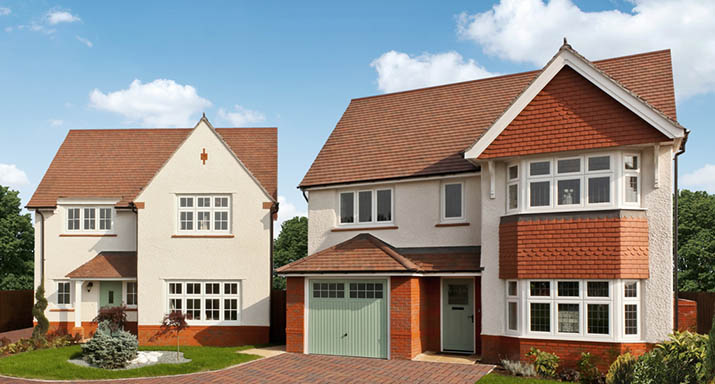The UK’s Housing Crisis

The Barker Review of Housing Supply
In March 2004 the Barker Review of Housing Supply published its final report. The report was authored by economist Kate Barker and detailed a number of recommendations based on some very thorough and excellent analysis. One of the recommendations was that the UK needed to build around 250,000 new homes every year to prevent spiralling house prices and a shortage of affordable homes. A line in the report’s Foreword reads: ‘A weak supply of housing contributes to macroeconomic instability, and hinders labour market flexibility, constraining economic growth’. As a direct result of the report, the 2007 Labour government set a target for 240,000 homes to be built a year by 2016. At this point in 2007, around 219,000 homes had been built in the year, but even this was far lower than the post-war decades, where in excess of 300,000 homes were completed every year. Following the financial crisis of 2008 the UK hit a post-war low and in 2013 135,500 homes were built. This figure recovered slightly to 141,000 in 2014 and is estimated to be around 143,560 for 2015.The present
So here we are in 2016. Labour’s 2007 target has long been forgotten and it looks extremely unlikely that the 250,000 figure detailed in the Barker report will be achieved any time in the near future.
The Department for Communities and Local Government has just released a report suggesting that 37,080 new homes were started in the last quarter of 2015, an increase of 23% on the previous year. These figures appear to show a step in the right direction but Labour’s housing spokesman John Healey said the total was “still falling far short of what the country needs”.
“Ministers have talked up the economic recovery, but these figures show that there were more than 20% fewer new homes started last year than before the global financial crisis,” and Shelter’s chief executive Campbell Robb commented that only half the number of homes needed were being built.
So what’s the problem?
That depends who you talk to. In a 2014 survey by estate agents, Knight Frank more than 100 of the largest, midsized and smaller housebuilders listed rising costs, local opposition to development and the planning system as the main obstacles.
There have been attempts to address some of these issues, in 2012, the government introducing a slimmed-down National Planning Policy Framework in an attempt to simplify the planning system and announced in 2014 that the number of planning permissions for new homes reached 240,000, although it is unlikely that all of these will reach the final stage of planning.
Kate Henderson, chief executive of the Town and Country Planning Association suggests that the abolishment of national and regional planning housebuilding targets encourages local opposition to projects, citing a doubling of legal challenges on local plans by planning inspectors who are picking councils up on not assessing their housing needs properly. “There’s a lot of pressure from politicians in certain areas to suppress housing figures.”
A shortage of available land and rising prices has also been cited as a problem. Residential land prices rose 170% from 2000 to 2007 compared to house prices which rose 124%, according to the IPPR.
The homeless charity, Shelter, have consistently voiced concerns over a shortage of available building land and both the private sector HBF and the National Housing Federation (NHF), which represents housing associations also agree that land is the main long-term constraint. The NHF says that local plans drawn up by councils often fail to identify enough land to meet local housing needs
One of the most controversial areas of possible reform is around the greenbelt – the protected ‘green’ areas around urban centres. There are consistently calls from planning and construction industries to relax the rules, though while many might see opening up the greenbelt for development as a way forward, politicians are unlikely to agree to something so controversial with voters.
There are also allegations of Housebuilders sitting on land and holding back homes. If they hold back homes and release them gradually the price remains high, though we have personal experience of working on large construction projects and know all too well that these kinds of developments can take many years. Steve Turner from the HBF says “Housebuilders can only build at the rate a local market will support; you cannot build out a site for 5,000 houses instantly or indeed put them up for sale in a local market at once. So when local authorities are drawing up their local plans it’s imperative they include more smaller sites and not just a few large ones which inevitably take years to build out.”
The demise of social housing
Councils used to build more homes than the private sector. Up to the 1970’s local authorities were building in excess of 100,000 homes every year. This fell into decline following the election of Margaret Thatcher in 1979 and although construction increased in the private sector it has not been anywhere near enough. During the 1950’s and 60’s councils alone were building similar amounts of homes as the totals recently announced by The Department for Communities and Local Government.
It seems that at some stage there was a plan for this shortfall to be addressed by housing associations.
In 2013 housing associations built 21,600 homes with a number of sources citing unnecessary restrictions including rules over how they set their rents, how properties are let and how housing stock is valued for lending purposes. These all reduce housing associations’ ability to borrow money for housebuilding, says Rachel Fisher, head of policy at the NHF.
There was a time when the private sector alone built over 279,000 homes a year but this was during the 1930’s and the economy, legislation and mortgage conditions are very different now. It is unlikely that this will be the case again anytime soon.
